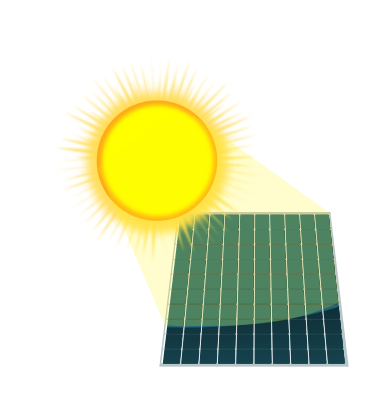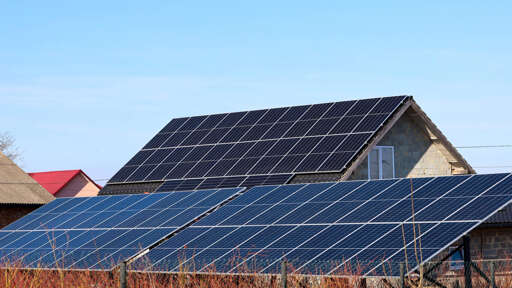Solar energy experts in Germany are putting sun-catching cells under the magnifying glass with astounding results, according to multiple reports.
The Fraunhofer Institute for Solar Energy Systems team is perfecting the use of lenses to concentrate sunlight onto solar panels, reducing size and costs while increasing performance, Interesting Engineering and PV Magazine reported.
The “technology has the potential to contribute to the energy transition, facilitating the shift toward more sustainable and renewable energy sources by combining minimal carbon footprint and energy demand with low levelized cost of electricity,” the researchers wrote in a study published by the IEEE Journal of Photovoltaics.
The sun-catcher is called a micro-concentrating photovoltaic, or CPV, cell. The lens makes it different from standard solar panels that convert sunlight to energy with average efficiency rates around 20%, per MarketWatch. Fraunhofer’s improved CPV cell has an astounding 36% rate in ideal conditions and is made with lower-cost parts. It cuts semiconductor materials “by a factor of 1,300 and reduces module areas by 30% compared to current state-of-the-art CPV systems,” per IE.
Worth looking at https://www.halocell.energy/
They have a solution where they overlay perovskite cells over traditional PV and can augment collection without impacting the regular PV underneath…
I worked at a building-applied CPV company on a pretty much identical product for years. Let me tell you it is an infinite rabbit hole. It all makes sense on paper, but the added complexity of 2-axis tracking and all the parts and safeguards that go with it eat up potential savings and are just not worth it in an environment like this. Even best case commercial or industrial sites are usually managed by BMS and no one wants their system to touch this.
I love the idea, but it’s just not going to replace low(enough) cost, low maintenance flat plate.
These types of articles are always cool sounding but they never have any actual images of the design in question. Sad science noises.
The article has several links to sources which go into greater detail, each containing their own sources such as this which contains more design info you may find helpful.
I clicked on a few but admittedly gave up too quickly. The paper had the same picture but fairly low resolution. This article had a better one: https://www.pv-magazine.com/2025/06/05/fraunhofer-ise-unveils-micro-cpv-module-with-cost-reducing-design/

I wonder if it’s possible to take older panels and apply this technique on a larger scale to upgrade them.
I think they will simply get burned as they are not designed for radiation levels 2x or even 10x of normal sunlight. (10x would be a huuuge lens) The cells in the paper are actually fucking tiny, the lenses apparently create an area with 1000x the energy density as normal sunlight, so these cells are just completely different from normal PV cells. If you focused that much energy on a normal PV panel it would just melt or evaporate.
The single cell–lens unit uses a solar cell with a chip area of 885 × 685 μm2 and an active area of 585 × 585 μm2
So the actual cell is roughly 0.6mm by 0.6mm

Reading this reminds me there’s efficiency in terms of energy conversion (which is presumably what the efficiency stat here refers to) as well as efficiency in terms of materials and space usage (which is why there’s separate stats talking about those aspects).




